An amazing piece of research carried out by Salience highlighted the winners and losers in the online wine market in the UK, the annual insight report recently published.
“We believe in publishing free insights to bring us closer to our favourite brands. If this is the first time you’ve seen our annual market report, we’re a UK search marketing agency that specialises in SEO, Paid Media & Content.
This report highlights your brand’s successes & shortcomings compared to your industry’s biggest names across ten key digital metrics, from your market share of organic visibility to social prowess and consumer search trends.” said Richard Waters Sales and Marketing Director.
The key SEO metric. Visibility is all about how easily your brand can be found online. It’s a little like the footfall of the internet. The greater your brand’s, visibility the more likely you can be found by your target market.
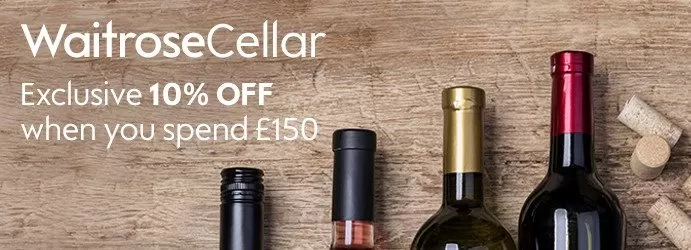
These brands are the ones to watch. They’re on the rise with the biggest growth in the market. Whatever they’re doing, search engines are loving it and you’ll want to work out what that is and emulate their strategies, fast.
Top 5 Wins at Wine
1. Waitrose Cellar
2. Masters of Malt
3. The Bottle Club
4. Beerwulf
5. Honestbrew
Bottom 5 Losses at Wine
On the opposite end of the spectrum, these brands have had the biggest visibility drops. They’re likely to have been punished by a search algorithm update or have let things slide over the year. Either way, learn from their mistakes.
1. Fortnum & Mason
2. Majestic
3. Beerhawk
4. Virgin Wines
5. Berry Brothers and Rudd
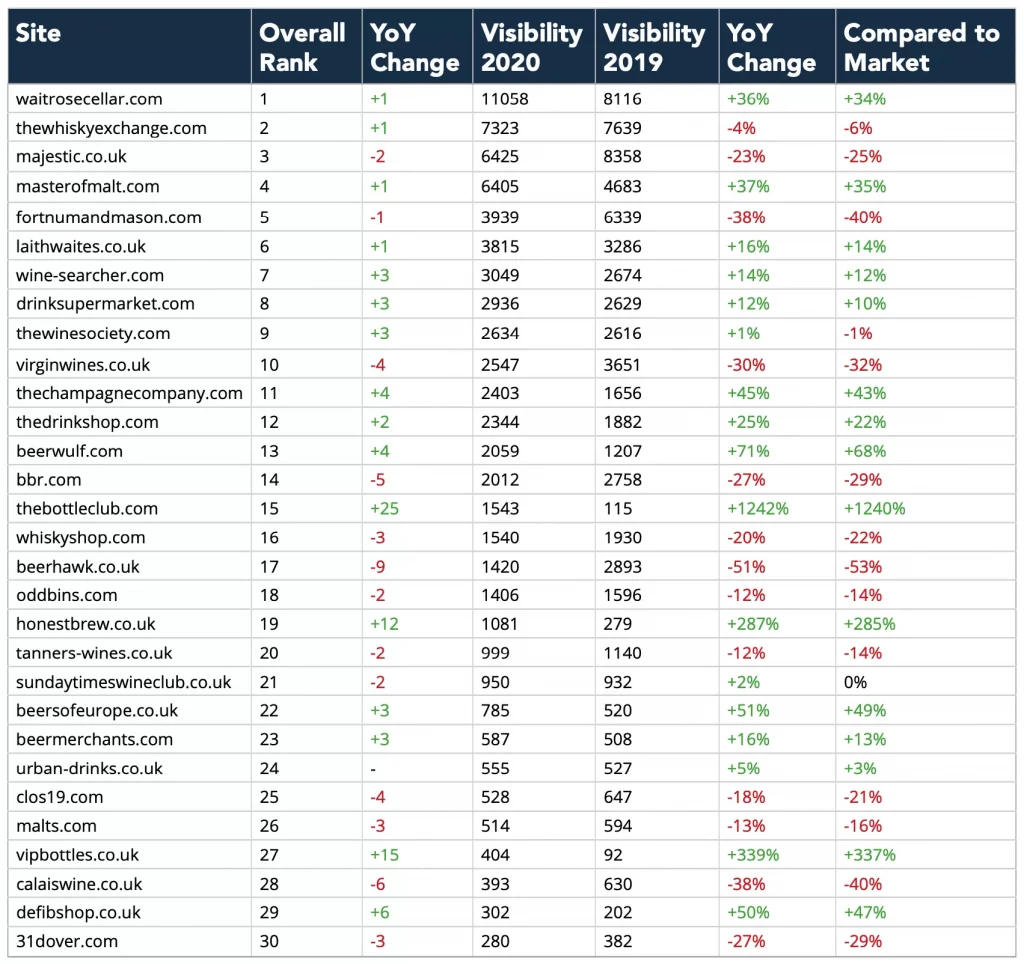
Wine Visibility vs Authority.
Authority is about the stature and reputation of your website. Search engines like high authority sites as they’re loaded with trust-worthy signals and likely to provide useful services and content.
Authority is measured through a metric called domain rating. The higher it is, the more chance you have to rank for competitive keywords and boost your visibility.
Search engines judge authority through a domain’s popularity, size, and age. They use on and off-site signals to determine your rank.
By matching visibility scores to authority, we identify which sites are performing beyond their means. These are the ones to learn from.
Authority is best achieved through link-building. But it’s not about quantity. A few high-quality links go miles further than loads of spam.
Low-authority brands that are ranking for high-volume terms are the ones to watch. Target the keywords they perform well on for quick growth.
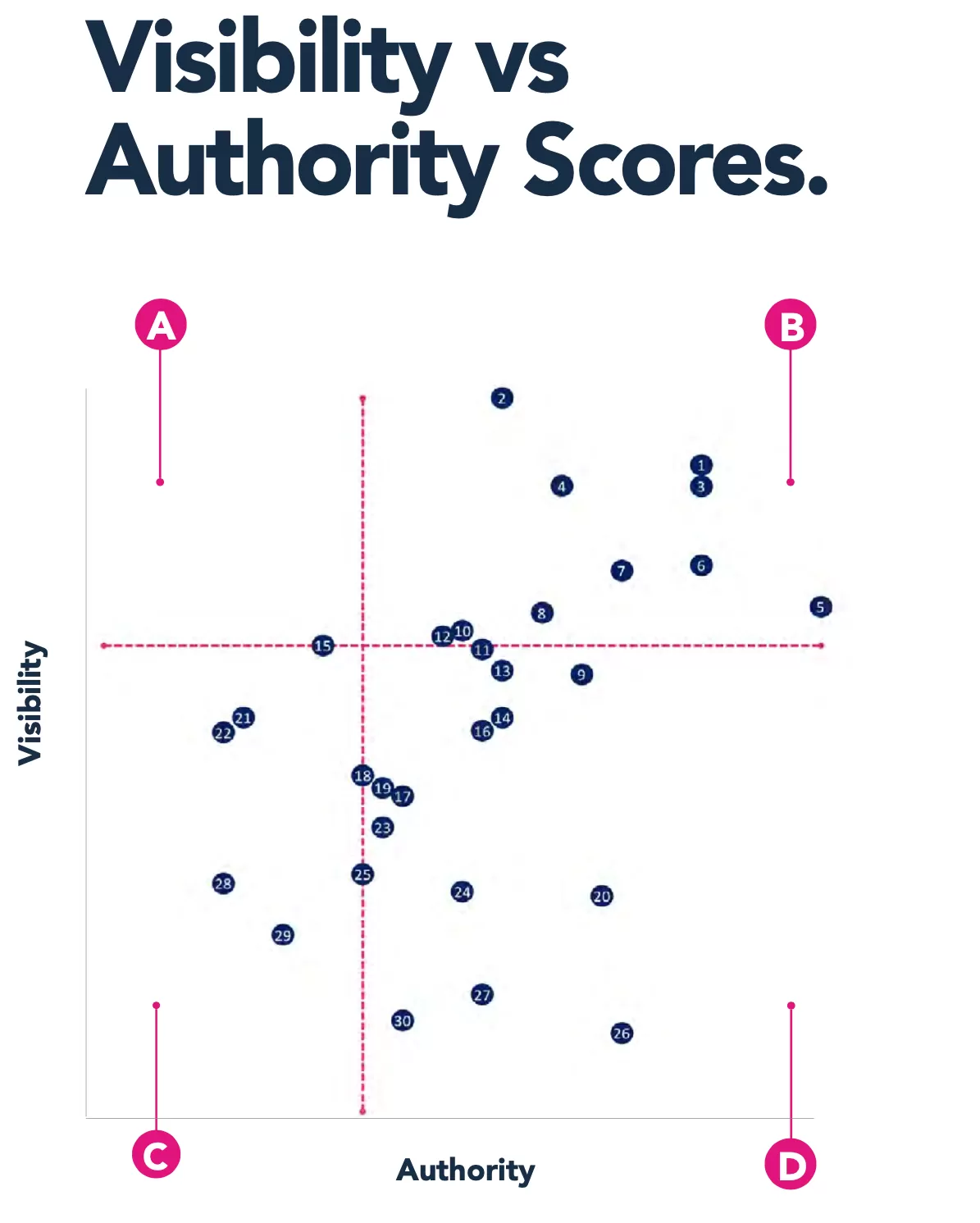
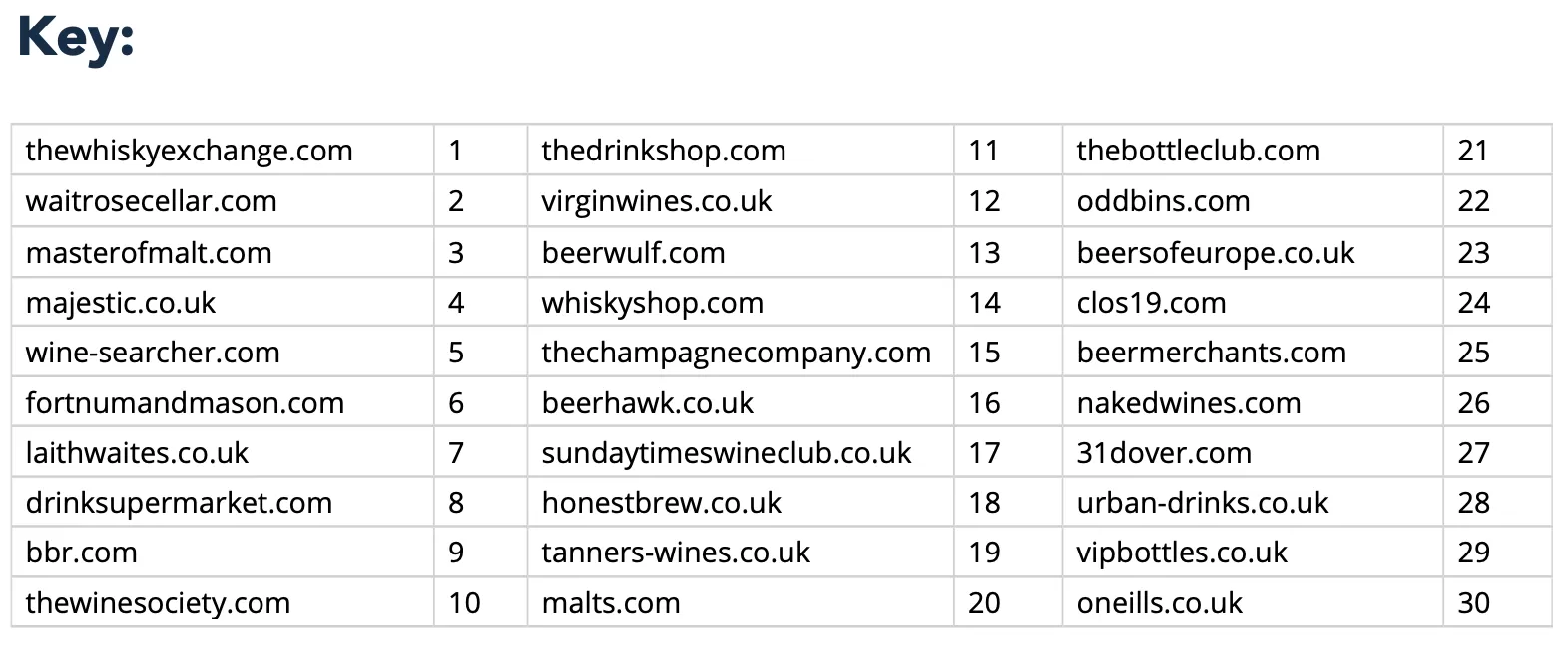
Top left. Those with high visibility but low authority have laid good foundations for their site and would benefit from increased search marketing activity built on those foundations.
Bottom left. Sites with low visibility and authority should look on the bright side, there’s a lot of room for improvement. brands in this zone should consider urgently rethinking their on-site technical and structural set-up, as well as the keyword strategy and off-site campaigns.
Top right. Hats off to these guys. They’ve built their houses right and have the search marketing strategy to expand. At this point, they should be thinking about solidifying themselves as market leaders.
Bottom right Low visibility, high authority. At school, these sites were the kids who ‘had potential’. Some on-site issues are holding these brands back. Whether those issues lie in content, structure or tech, an on-site review is highly recommended.
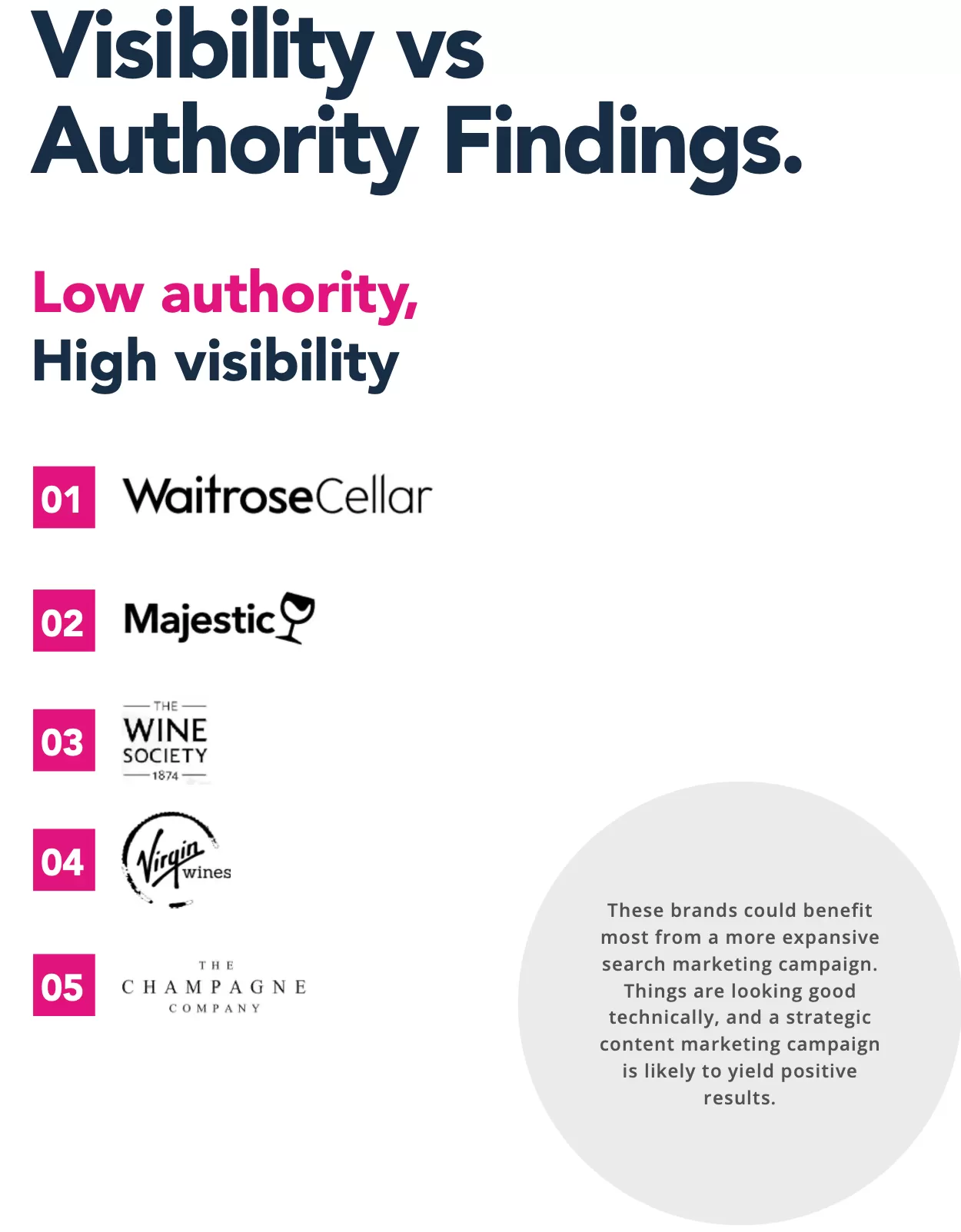
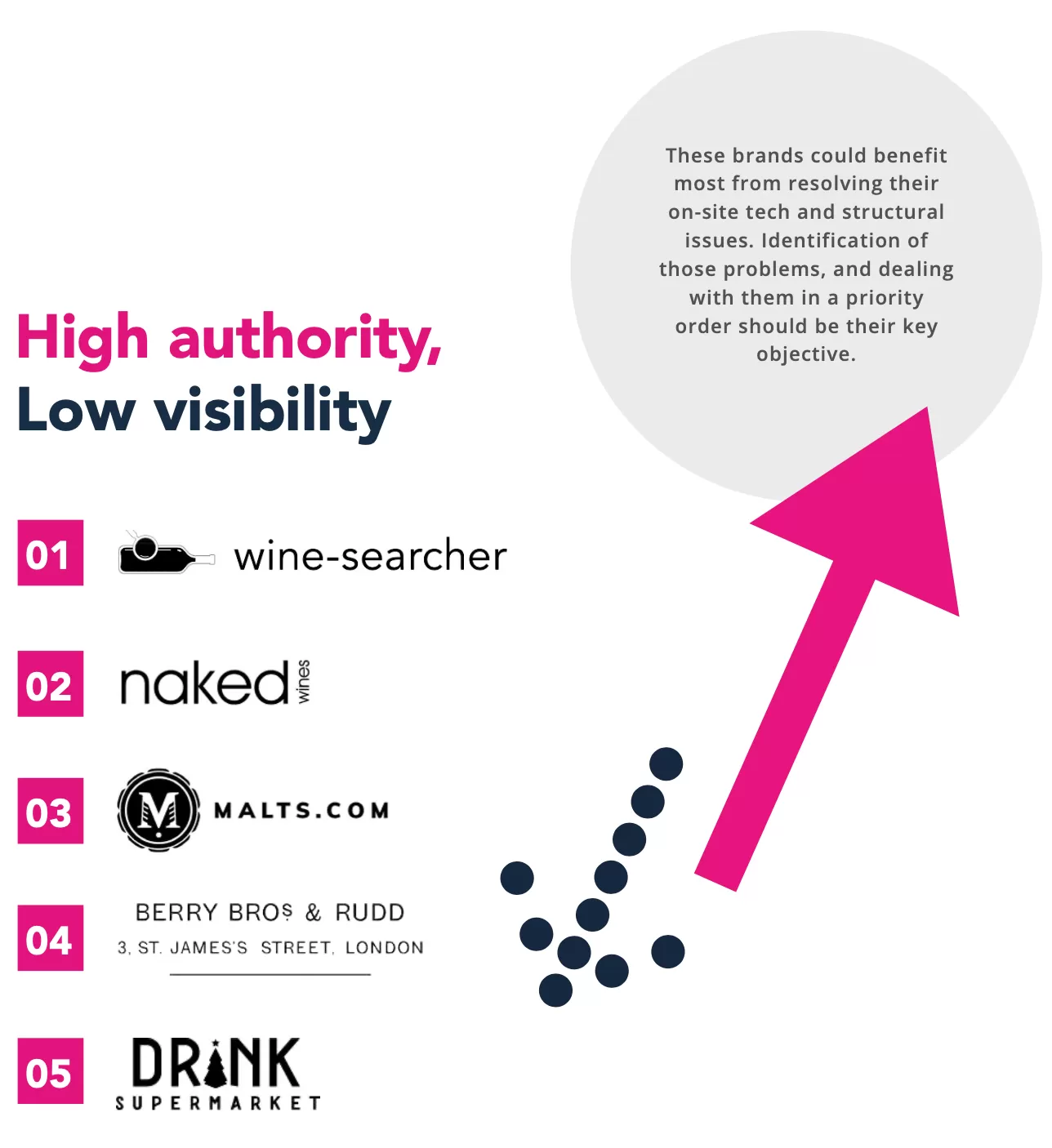
Wine Vintners Page Speed
Perhaps 2021’s biggest news in the world of digital marketing, Google has announced a new ranking factor set to shake up the web. Titled Core Web Vitals, this new ranking factor will centre around page speed. We’re talking largest contentful paint (LCP) and first input delay (FID) – in simple terms, how fast your site loads and how fast it can be interacted with.
The first step is to check how you compare against the rest of your industry. Luckily, we’ve got just the thing. Our page speed leaderboard shows which brands are lightning-fast and which those lagging.
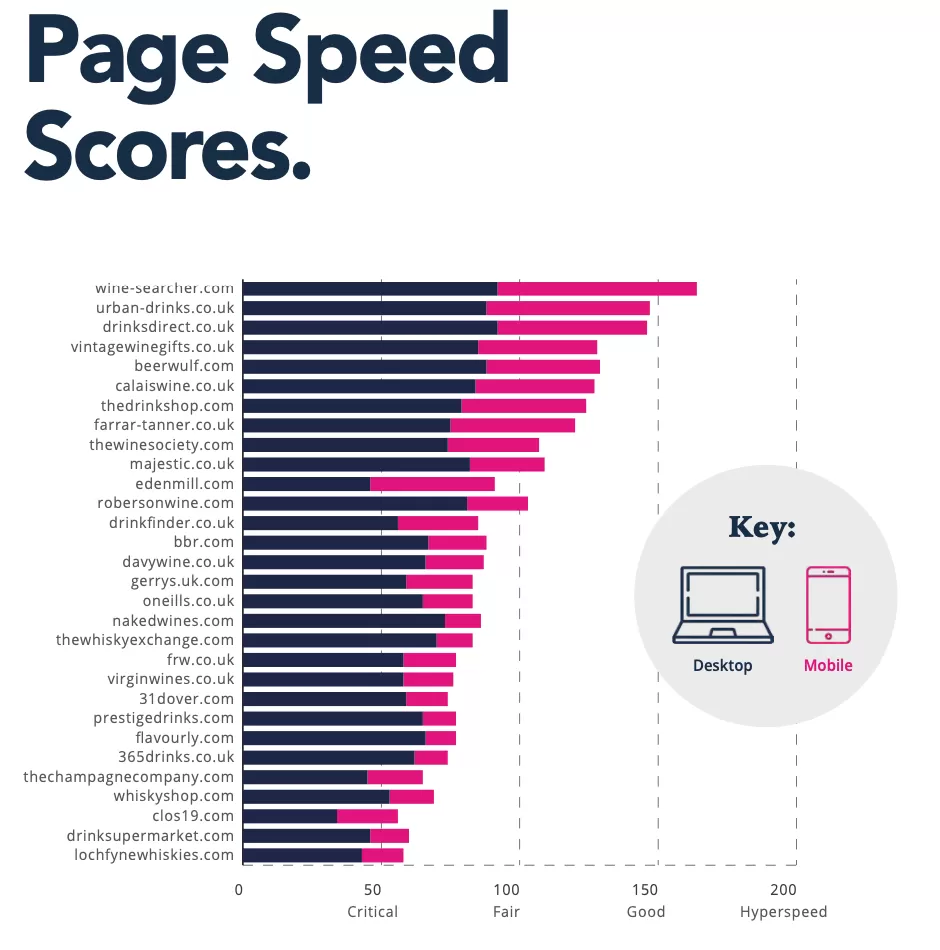
Wine Keyword Trends
We’ve been keeping a close eye on what keywords people are searching for in the market, allowing us to see what is trending.
In the following sections, we’ll give you the heads up on which keywords are on the rise and need your attention, alongside those which are becoming less and less important.
Using historical search data, we’re able to find trend patterns and identify opportunities ahead of the curve. Our search and content strategists continually monitor industry movements. From here, we’re able to spot content and category gaps before they’re deemed industry- standard.
High Competition Wine Keywords.
These keywords are the heavyweight belts, the golden tickets, the ones to tell your nan about. For top-of-market brands holding these positions, close monitoring and continued search marketing activity is needed to safeguard them. For challenger brands looking to weigh in, you best bring your A-game.
High-competition keywords are typically sought after by big brands. We’re talking about those with bricks-and-mortar stores & large brand reach.
Qualifying intent is more important than ever on these keywords. Providing the correct user journey upon the first click is critical.
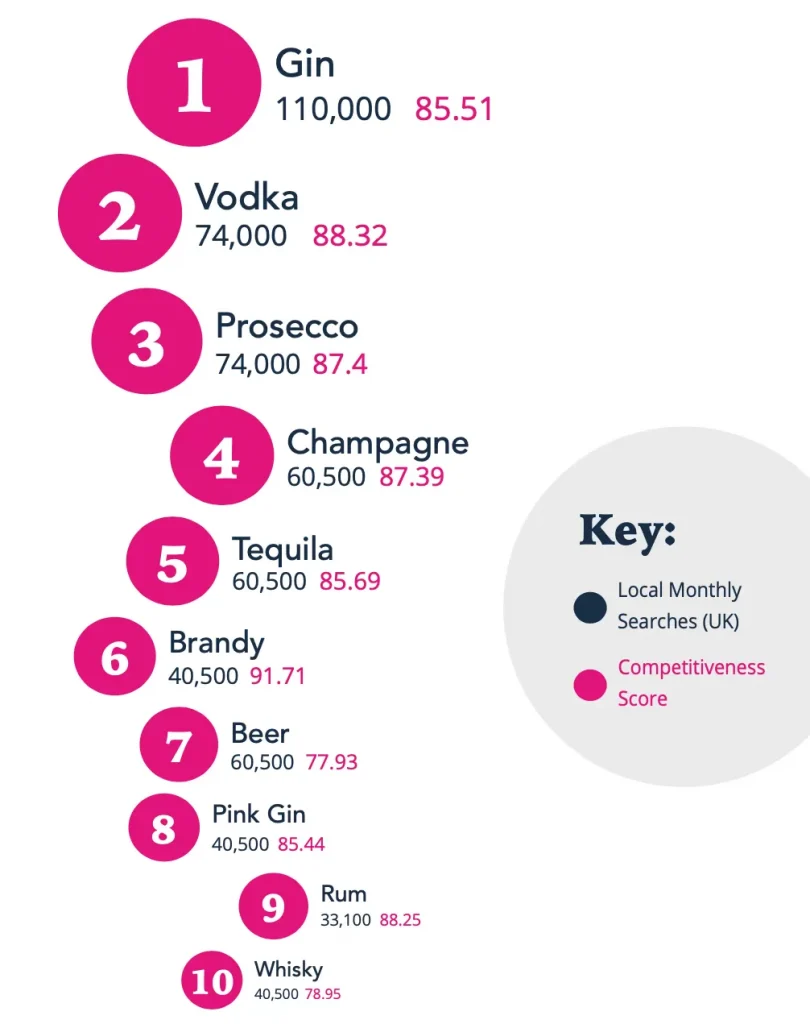
Wine Opportunity Keywords
These terms have less competition yet high search volumes. As such, they are a perfect battleground for all brands in the industry to increase their digital reach.
Marketing teams across the industry ignore these terms but audiences are interested. With strong volumes and low competition, they’re ripe for the taking. For challenger and low-visibility brands, these are the terms where you’ll see the most success. Concentrate on these and you’ll see traffic and revenue start to grow. For market leaders, these are the terms that have probably skipped your radar. Dig into these and corner the market.
Trust
First introduced with the E-A-T Algorithm update in 2018, trust has since become a critical ranking factor. But there’s no single score to judge trust. Instead, it’s a holistic view of your website’s expertise, authority and trustworthiness. It centres around both on and off-site signals. Think external review platforms, high-quality links, transparency over processes and policies, and plenty more.
Your Money Your Life (YMYL) / eCommerce brands are those most likely to see visibility drop as a cause of poor trust signals.
Search quality evaluator guidelines identify how manual reviewers evaluate your sites trustworthiness. Use these to get ahead.
Online Reviews
First introduced with the E-A-T Algorithm update in 2018, trust has since become a critical ranking factor. But there’s no single score to judge trust. Instead, it’s a holistic view of your website’s expertise, authority and trustworthiness. It centres around both on and off-site signals. Think external review platforms, high-quality links, transparency over processes and policies, and plenty more.
Digital Brand Reach.
Digital Brand Reach centres around how well-recognised your brand is within the industry. To calculate this figure, we blend traditional search metrics with the performance of social channels across the sector. This helps identify which brands are most prominent across a range of channels and those who are lost to the abyss.
Brand searches are a traditional measure. Owned social is important too. This identifies the audience you have access to.
Brand searches are a traditional measure of how many people are searching for your brand name through search engines.
Owned social scores are increasingly important in this hyper-digital world. Improving yours is key to cross-channel traffic acquisition.
A key element of trust, reviews are essential to your search marketing arsenal. Having more good reviews than your competitors is important for off-site trust signals (part of the EAT update), local pack prominence, and CTR where star ratings feature in the SERPs.





